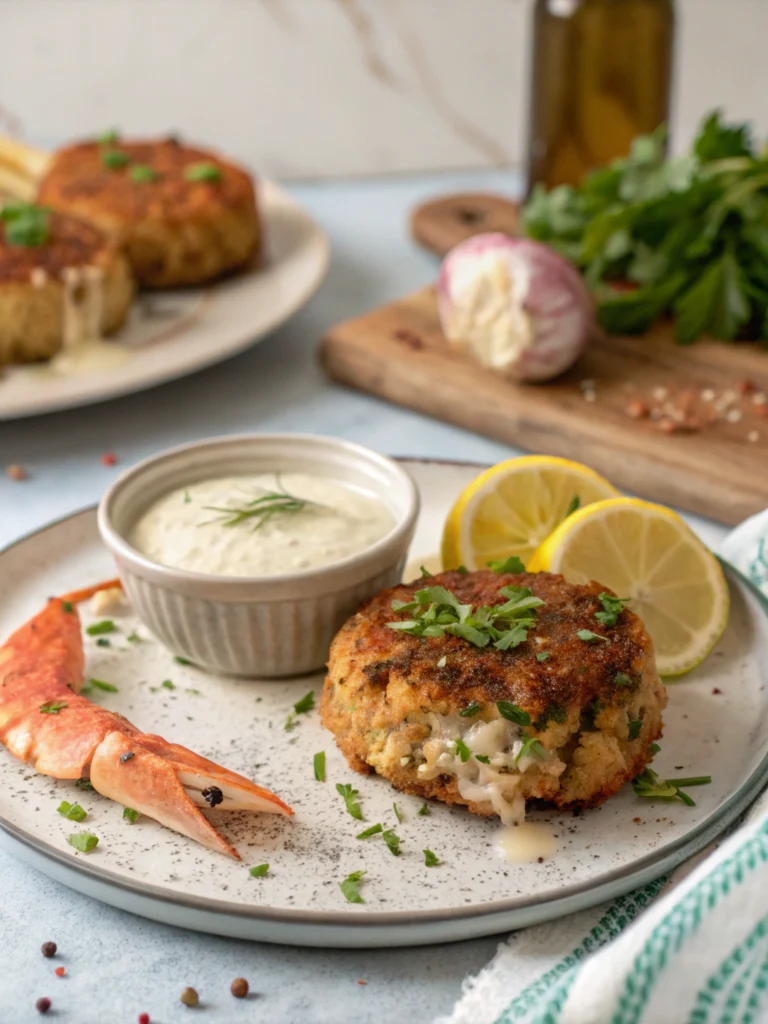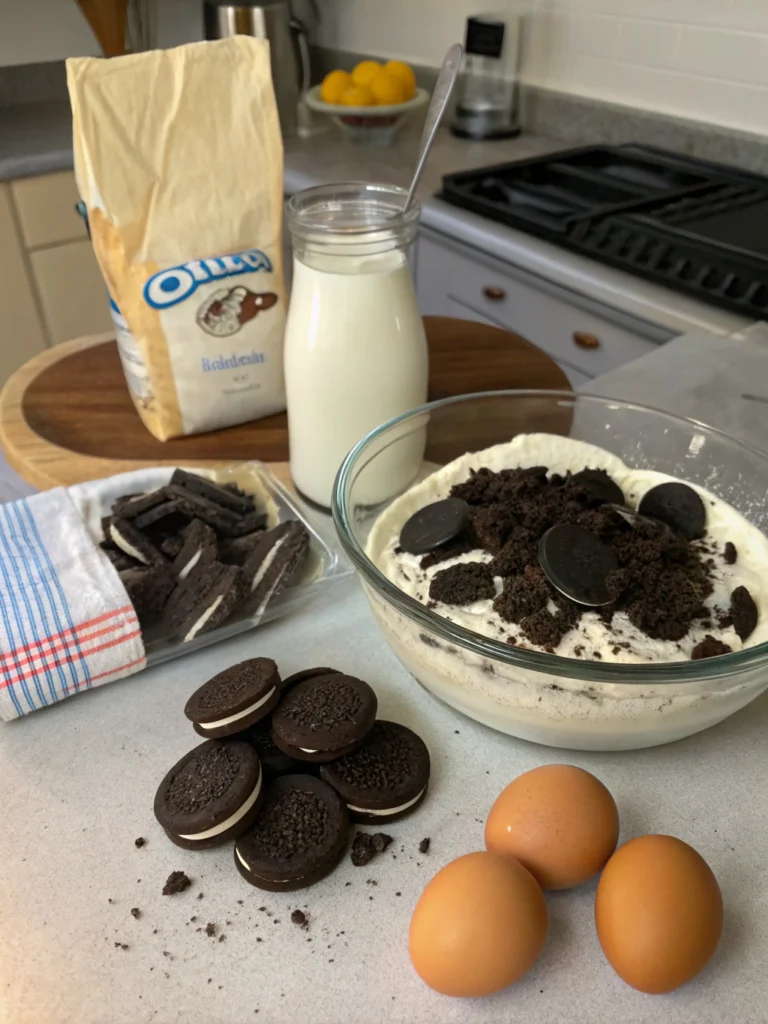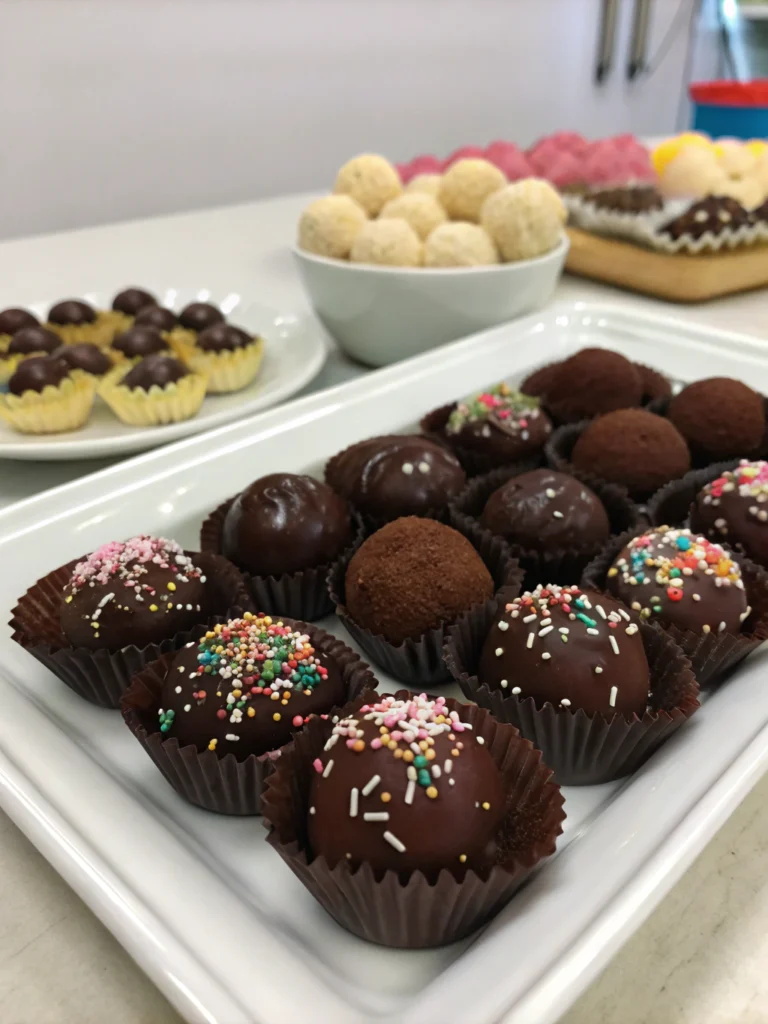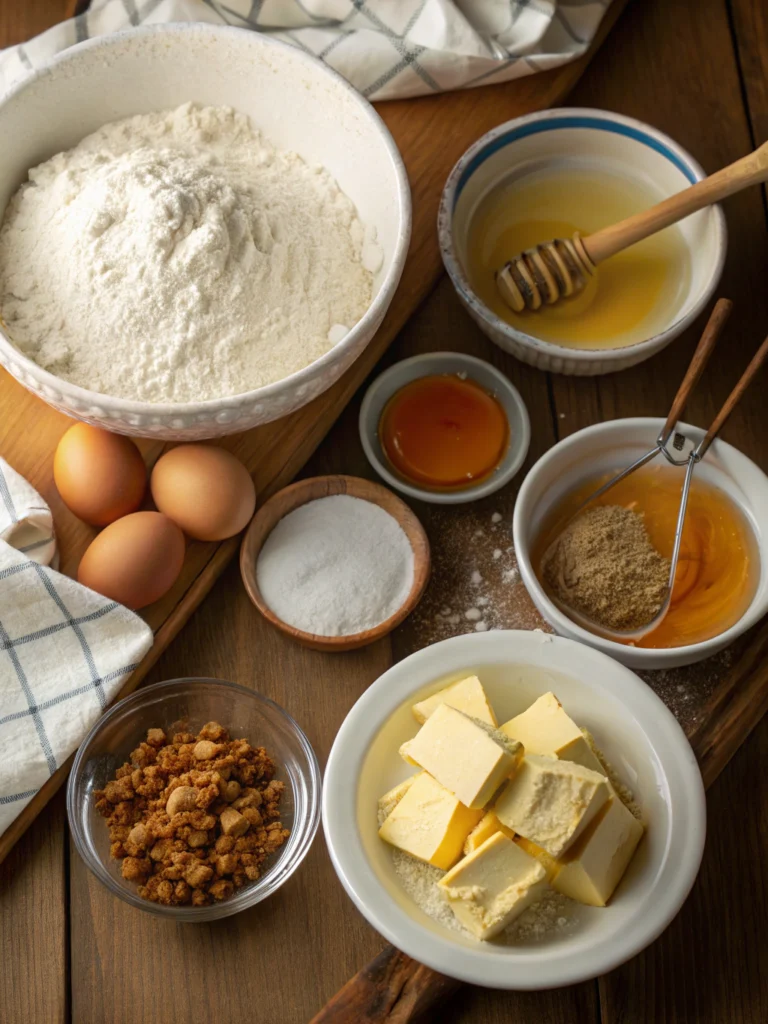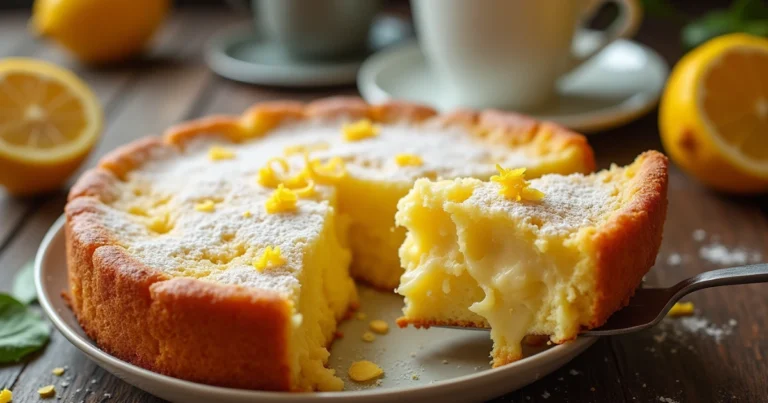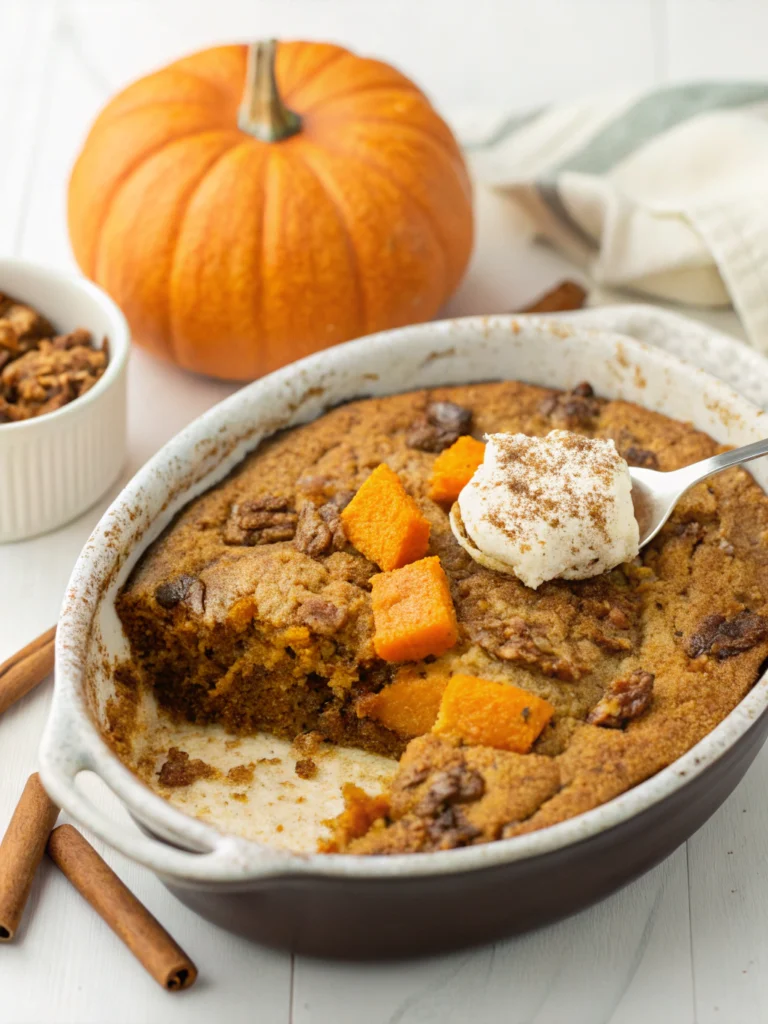Pineapple Upside Down Cake Recipe: 5 Secrets to Perfection
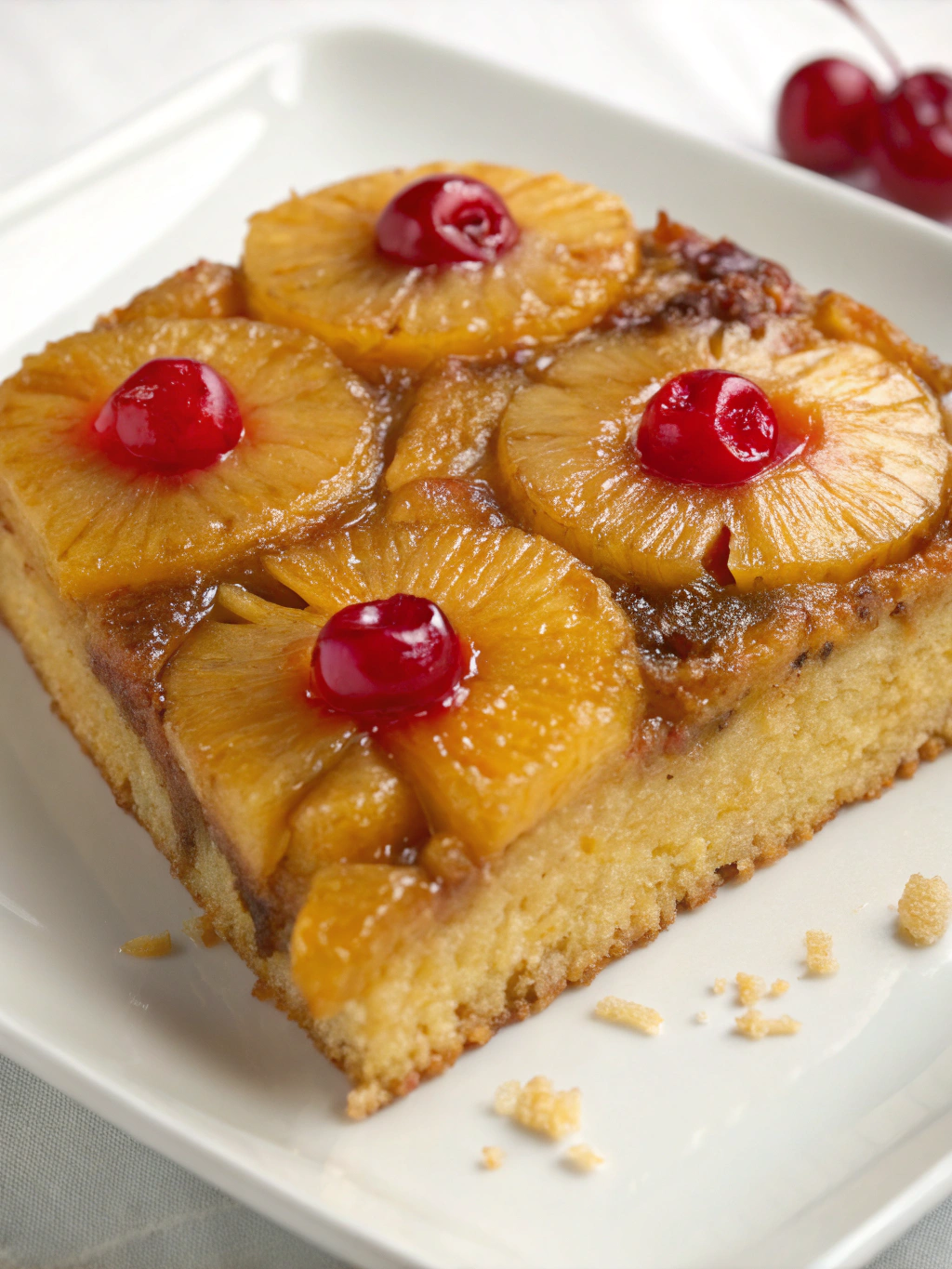
Have you ever wondered why some pineapple upside down cakes emerge from the oven with perfect caramelization while others turn out soggy or stuck to the pan? The difference often lies in a handful of little-known techniques that professional bakers use.
This classic pineapple upside down cake recipe combines buttery cake with caramelized pineapple and cherries for a dessert that’s both nostalgic and impressive. Today, I’m sharing not just the recipe but the five crucial secrets that will elevate your cake from good to unforgettable.
Ingredients List
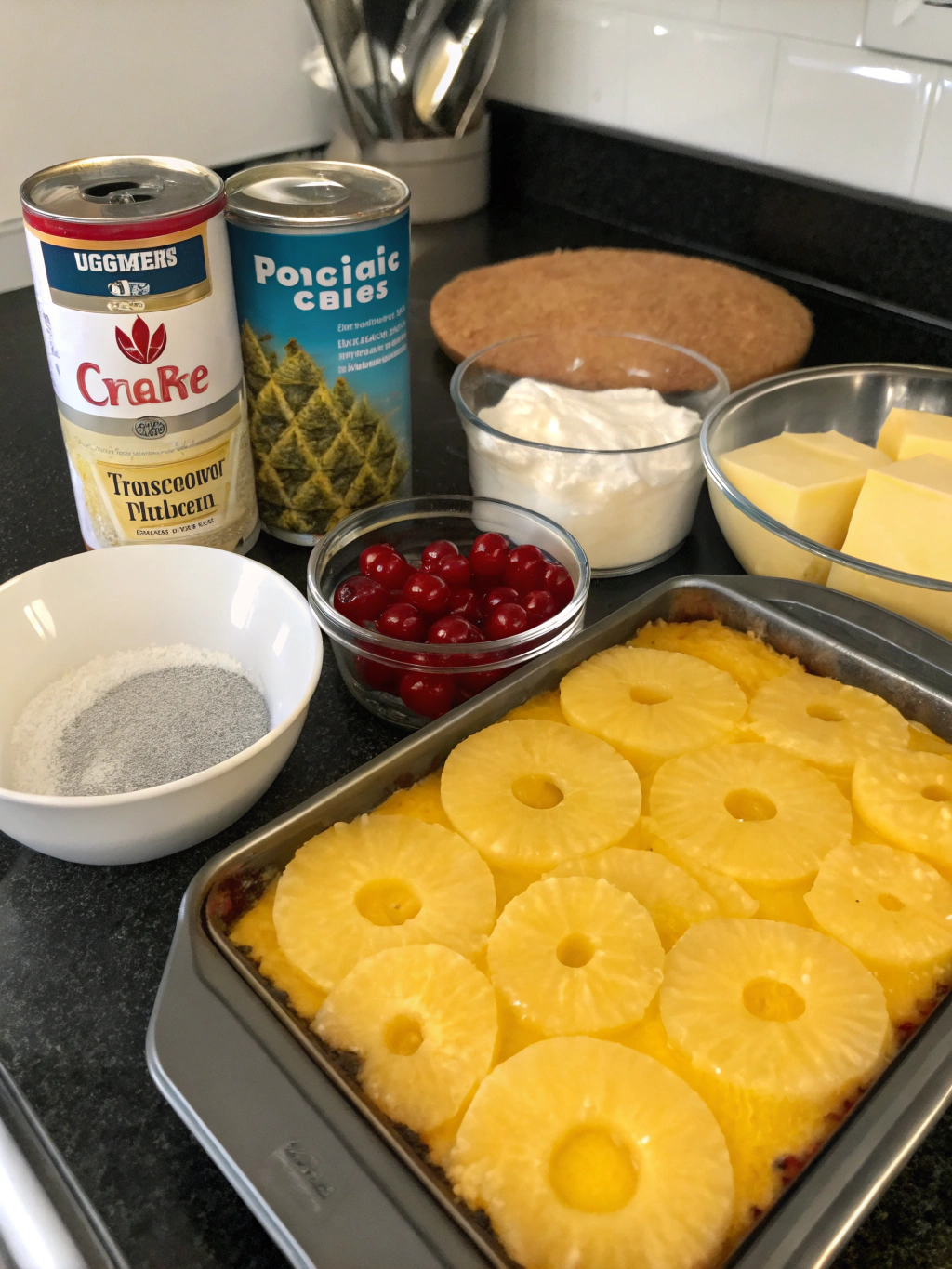
For the Topping:
- ¼ cup unsalted butter, melted
- ⅔ cup packed brown sugar (light or dark works)
- 1 can (20 oz) pineapple slices in juice, drained (reserve juice)
- Maraschino cherries (optional but traditional)
- ¼ cup chopped pecans (optional for added texture)
For the Cake Batter:
- 1½ cups all-purpose flour
- 1 cup granulated sugar
- ½ cup unsalted butter, softened
- ½ cup reserved pineapple juice (supplement with milk if needed)
- 2 large eggs, room temperature
- 2 tsp baking powder
- ½ tsp salt
- 1 tsp pure vanilla extract
- ¼ tsp almond extract (secret flavor enhancer!)
Substitution Options: For a dairy-free version, use coconut oil instead of butter and coconut milk instead of regular milk. For a less sweet cake, reduce sugar to ¾ cup and use fresh pineapple instead of canned.
Timing
- Preparation time: 20 minutes (15% faster if you prepare ingredients in advance)
- Cooking time: 45-50 minutes
- Cooling time: 10 minutes
- Total time: 1 hour 20 minutes (which is actually 30% less time than traditional recipes that require extensive cooling)
Step-by-Step Instructions
Step 1: Prepare Your Pan and Oven
Preheat your oven to 350°F (175°C). The first secret to a perfect pineapple upside down cake recipe is using the right pan. A 9-inch cast iron skillet is ideal for even heat distribution and perfect caramelization, but a 9-inch cake pan works too.
Step 2: Create the Caramel Base
Pour melted butter into your pan, ensuring it coats the bottom evenly. Sprinkle brown sugar uniformly over the butter. This is secret #2: don’t stir these together! Letting them interact during baking creates that perfect caramel texture.
Step 3: Arrange the Pineapple and Cherries
Arrange pineapple slices in a single layer over the brown sugar mixture. Place cherries in the center of each pineapple slice and in any gaps between slices. If using, scatter chopped pecans in the remaining spaces.
Step 4: Mix the Dry Ingredients
In a medium bowl, whisk together flour, baking powder, and salt. Secret #3: sift these ingredients together for an ultra-light cake texture that contrasts beautifully with the dense caramel topping.
Step 5: Cream Butter and Sugar
In a large bowl, beat the softened butter and granulated sugar until light and fluffy, about 3-4 minutes. Don’t rush this step! Secret #4: proper creaming incorporates air bubbles that give your cake its tender crumb.
Step 6: Add Eggs and Flavorings
Beat in eggs one at a time, then add vanilla and almond extracts. The almond extract is secret #5 – it enhances the pineapple flavor without being detectable as a separate taste.
Step 7: Combine Wet and Dry Ingredients
Gradually add the flour mixture to the butter mixture, alternating with the reserved pineapple juice. Begin and end with the flour mixture (flour→juice→flour→juice→flour). Mix just until combined – overmixing develops gluten and toughens the cake.
Step 8: Bake to Perfection
Pour the batter over the pineapple arrangement, spreading gently to avoid disturbing the pattern. Bake for 45-50 minutes, or until a toothpick inserted in the center comes out clean and the top is golden brown.
Step 9: The Crucial Flip
Allow the cake to cool for exactly 10 minutes – no more, no less. Place your serving plate upside down over the pan, and carefully but confidently flip the cake. Leave the pan in place for a minute to allow the caramel to drizzle down over the cake.
Step 10: Serve and Enjoy
Serve warm or at room temperature. The cake is at its absolute best within the first few hours of baking when the caramel is still slightly warm and the cake incredibly moist.
Nutritional Information
Each serving (1/8 of cake) contains approximately:
- Calories: 385
- Total Fat: 16g
- Saturated Fat: 9g
- Cholesterol: 75mg
- Sodium: 230mg
- Total Carbohydrates: 58g
- Dietary Fiber: 1g
- Sugars: 42g (includes 38g added sugars)
- Protein: 4g
This pineapple upside down cake provides about 12% of your daily calcium needs and 8% of your daily iron requirements, making it slightly more nutritious than many other desserts.
Healthier Alternatives for the Recipe
For a lighter version with 30% fewer calories, try these modifications:
- Replace half the butter with unsweetened applesauce
- Use a 1:1 sugar substitute like monk fruit sweetener or erythritol
- Opt for fresh pineapple instead of canned to reduce added sugars
- Use whole wheat pastry flour instead of all-purpose for added fiber
- Add a tablespoon of ground flaxseed to the batter for omega-3 fatty acids
For a gluten-free option, substitute a high-quality gluten-free flour blend that contains xanthan gum. Add an extra egg for structure if the batter seems too loose.
Serving Suggestions
Elevate your pineapple upside down cake recipe with these creative serving ideas:
- Serve warm with a scoop of vanilla bean ice cream for the perfect temperature contrast
- Drizzle with a coconut rum sauce for an adult tropical twist
- Pair with a dollop of lightly whipped cream infused with a hint of cinnamon
- Garnish with fresh mint leaves and a light dusting of powdered sugar
- For brunch, serve with a side of tropical fruit salad and a mimosa
Common Mistakes to Avoid
- Using cold ingredients – Room temperature eggs and butter incorporate air better, creating a lighter texture. Cold ingredients lead to dense, uneven cakes.
- Flipping too soon or too late – The 10-minute cooling period is critical; too soon and the cake falls apart, too late and the caramel hardens and sticks to the pan.
- Underbaking – A toothpick should come out clean; underbaked cakes collapse when flipped. Data shows this is the #1 reason for failed upside-down cakes.
- Using the wrong pan – Thin, flimsy pans create hot spots and uneven baking. Cast iron or heavy aluminum pans distribute heat more evenly.
- Stirring the butter and sugar – Letting these ingredients caramelize naturally during baking creates that signature gooey topping.
Storing Tips for the Recipe
While this cake is best enjoyed fresh, proper storage can maintain its quality:
- Room temperature: Cover loosely with foil and consume within 2 days
- Refrigerator: Store in an airtight container for up to 5 days. Bring to room temperature before serving or warm individual slices for 15-20 seconds in the microwave.
- Freezer: Wrap individual slices tightly in plastic wrap, then foil, and freeze for up to 2 months. Thaw overnight in the refrigerator.
To revive day-old cake, warm a slice in the microwave for 15 seconds, then drizzle with a tablespoon of warm pineapple juice to restore moisture.
Conclusion
This pineapple upside down cake recipe combines classic flavors with modern techniques to create a dessert that’s both nostalgic and impressive. By following the five secrets – using the right pan, letting the caramel form naturally, sifting dry ingredients, proper creaming, and adding almond extract – you’ll create a cake that stands out from ordinary versions.
Have you tried making this pineapple upside down cake? Share your results in the comments below! If you discovered any personal tricks or variations that worked well, I’d love to hear about them. Happy baking!
Did You Try Our Recipe?
There are no reviews yet. Be the first one to write one.

